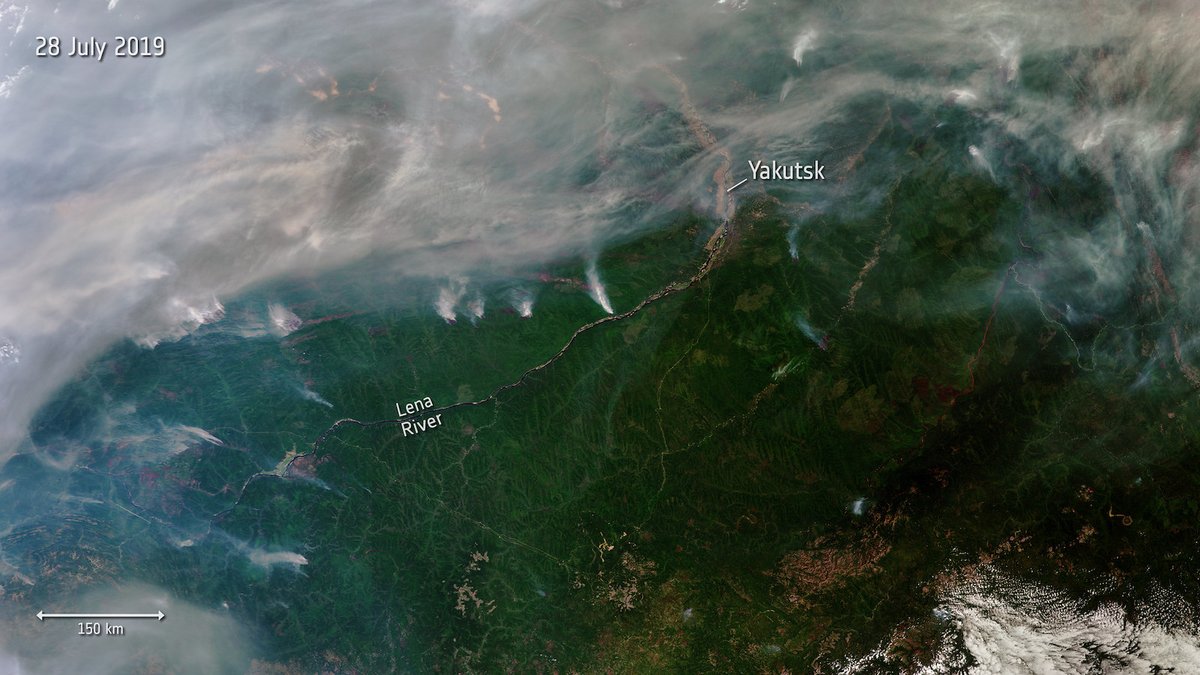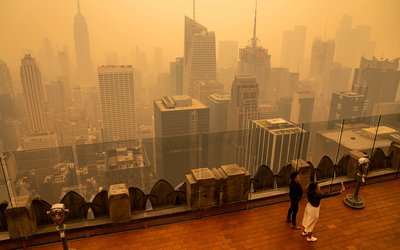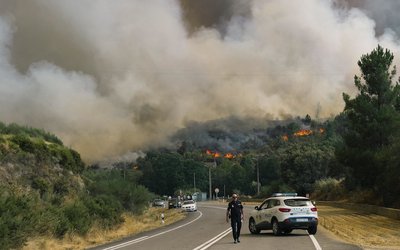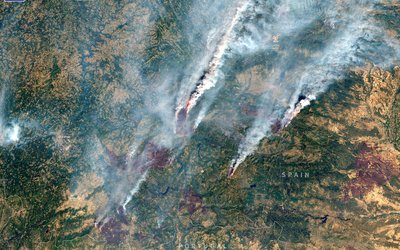Unprecedented fire activity in the Arctic in recent years due to global warming
March 12, 2023

Photo: Wildfires in the Siberian Arctic on 28 July 2019 (source: European Space Agency, www.flickr.com)
Siberian Arctic, a wildfire hotspot
Wildfires above the Arctic Circle can release large amounts of carbon from permafrost peatlands. The Siberian Arctic is the wildfire hotspot in the Arctic, accounting for 71% of the burned area in the Arctic in the period 1982–2020. In these four decades, the Siberian Arctic burned at the highest rates in 2019 and 2020. According to satellite data, burned area was sevenfold larger in 2020 than the 1982–2020 average. The Siberian Arctic fires in 2019 and 2020 accounted for 44% of the total burned area in the region for the entire 1982–2020 period.
Link to climate change
In a recent study in the journal Science, the unprecedented fire activity in recent years is linked to unusually high temperatures. The summer of 2020 was the warmest in four decades. Temperature-related factors that increase the risk of wildfires have increased in recent decades and show a near-exponential relationship with annual burned area. Higher temperatures have increased the length of the growing season and advanced snowmelt which, in turn have increased green biomass and thus fuel availability. In addition, extreme heatwaves, as in 2020, can potentially desiccate plants and reduce moisture in peat and thus increase the severity of burning.
Exceeding the 10°C threshold of summer air temperature in recent years appeared to be particularly relevant. Small increases in summer mean temperature above the 10°C threshold, it seems, tend to be associated with extensive burned areas.
Unprecedented fires increasingly common
Severe fire years will probably become increasingly common, increasing carbon emissions. According to the authors of this study, the trend of climate warming in the Arctic “is reaching a threshold in which small increases in temperature are associated with exponential increases in the area burned.” They also warn for a dual effect of climate on fire regimes, where warming not only increases the susceptibility of vegetation and peatlands to fire but also the number of lightning-caused ignitions.
Bad news for all of us
The climate in the Arctic is warming much faster than the global average. This results in thawing of permafrost and deterioration of peatlands with emissions of carbon dioxide and methane. These emissions enhance global warming, and this positive feedback leads to additional emissions contributing to further warming and thawing with further peatland degradation and emissions. Wildfires not only contribute directly to the emission of greenhouse gasses, but they also increase the deterioration of peatlands by removing the peat that insulates permafrost. Clearly, the unprecedented fire activity above the Arctic Circle and its link to global warming is bad news for all of us.
Source: Descals et al. (2022). Science 378: 532–537.








